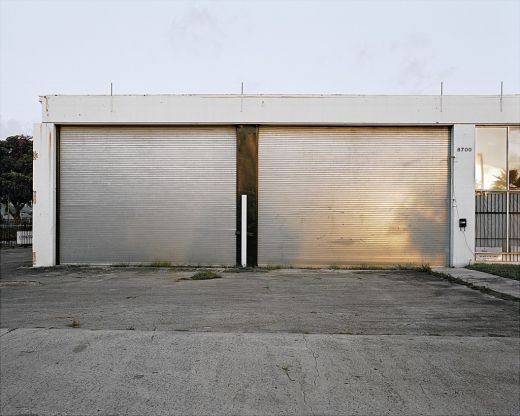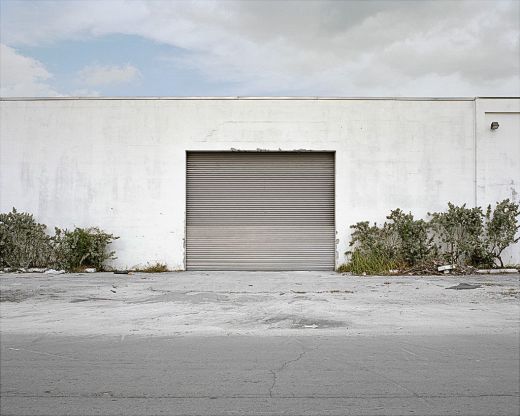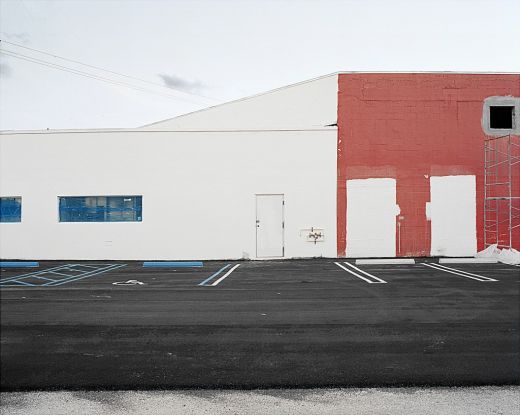Jorge Sánchez, The Opa-locka Effect

June 12 – September 7, 2014
The story behind Opa-locka is the lore of lore. Like Scheherazade’s stories within stories, it is a nesting doll of myth and fantasy. Sure, the community in Northwest Dade has the most Moorish architecture this side of Tangiers, but it’s also home to scores of nondescript warehouses and commercial buildings. Jorge Sánchez photographs these buildings—the architectural “common denominator,” as he puts it.

A grid of 20 photos on the right wall categorically deny easy typology of Miami architecture. Although the photos were taken in the same neighborhood (all of these pictures come from a larger project titled North of Flagler) they have more distinction, more color. Some are photographed from an angle. A shadow dangles down one façade like a noose.

Throughout this perfectly focused exhibition, Sánchez displays his knowledge of photographic history, and how it can be used to expand or limit a place. Because while all of the above-mentioned photographs are in black and white, it is the slight, reticent ripening of color that captures what is wonderful about these buildings, and this city. That, I assume, is the Opa-locka effect.









